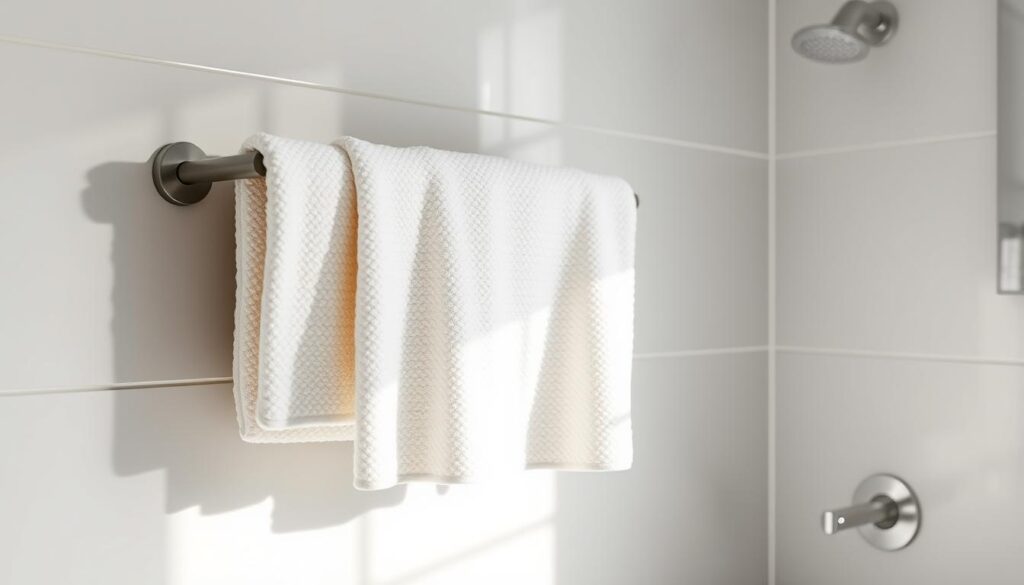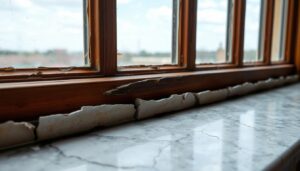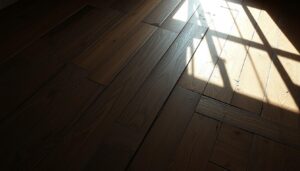Are you tired of dealing with a wobbly towel rail in your bathroom? It’s a common issue that can be easily resolved with the right approach.
Bathroom towel rails often become loose due to being secured only to the drywall and not the studs. Over time, the pressure on the rail can cause it to work loose, leading to an annoying problem.
You can easily address this issue by using the right attachment methods, such as toggle bolts, which provide superior holding power compared to standard wall anchors.
Key Takeaways
- Understand why your bathroom towel rail becomes loose over time.
- Learn effective methods to secure your towel rail properly.
- Discover the benefits of using toggle bolts for added stability.
- Find the right fixing technique for your bathroom wall material.
- Implement a lasting solution to prevent future loosening.
Why Bathroom Towel Rails Come Loose
The problem of loose towel rails in bathrooms is more prevalent than one might think. Understanding the reasons behind this issue is crucial to finding a lasting solution.
Common Causes of Loose Towel Rails
Towel bars are often secured only to the drywall and not the studs. Over time, pressure on the towel bar can cause it to work loose. Daily use and the weight of heavy, wet towels create constant pressure that gradually loosens towel rails from their mountings.
- Improper initial installation using inadequate fixings is a primary cause of loose bathroom fixtures.
- Bathroom humidity and temperature fluctuations can affect adhesive-mounted towel rails, causing them to detach over time.
Standard installation methods often fail, particularly when towel bars are secured only to drywall rather than wall studs. This can lead to a loose towel bar that is prone to falling.
| Cause | Effect |
|---|---|
| Inadequate fixings | Loose towel rail |
| Humidity and temperature changes | Detachment of adhesive-mounted rails |
Signs Your Towel Rail Needs Fixing
You’ll learn to identify early warning signs of a loose towel rail, such as slight movement or wobbling when touched. Assessing whether your current towel rail mounting is suitable for your specific wall type and usage patterns is crucial.
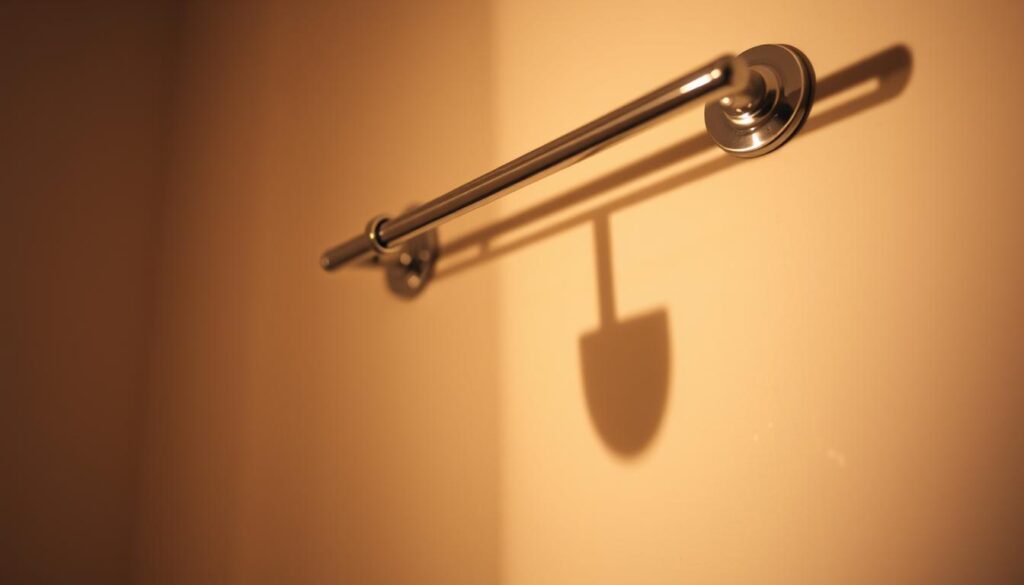
“A loose towel rail is not just a minor inconvenience; it’s a sign of a potentially larger issue with your bathroom’s infrastructure.”
By understanding these factors, you can take proactive steps to secure your towel rail and prevent future problems.
Tools and Materials You’ll Need
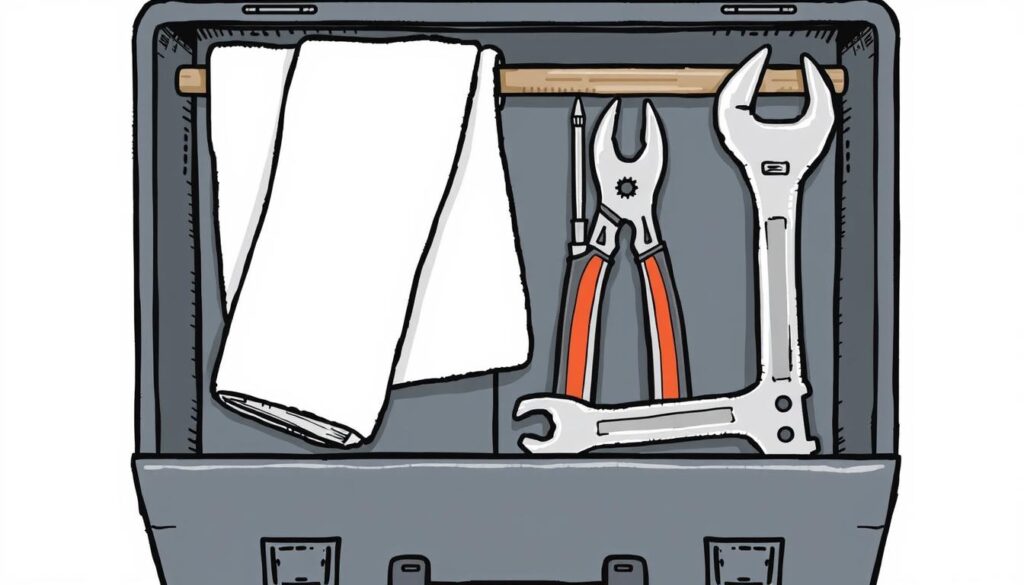
To secure your bathroom towel rail effectively, you’ll need to have the right tools and materials at hand. The task requires some basic tools and specific materials to ensure a sturdy fix.
Essential Tools for the Job
You’ll need basic tools including screwdrivers (both flathead and Phillips), measuring tape, and possibly a drill depending on your wall type. Having these tools ready will make the repair process smoother.
Choosing the Right Toggle Bolts
Toggle bolts come in various sizes, so it’s crucial to measure the thickness of your drywall, the holes in your towel rack attachment plates, and the size of the holes in your drywall. This ensures you purchase compatible toggle bolts that fit through the attachment plates and grab onto the inside of your wall.
Additional Supplies That Might Help
Additional helpful supplies include wall anchors, adhesive cleaners for removing old mounting residue, and patching materials for repairing damaged drywall. These supplies can make the repair more efficient and ensure a secure fix.
How to Fix a Loose Bathroom Towel Rail
The first step in fixing a loose bathroom towel rail is to remove the existing rail carefully. This involves loosening the set screws that hold the towel bar in place and detaching it from its mounting brackets or attachment plates.
Removing the Existing Towel Rail
To remove the existing towel rail, you’ll need to access the screws or clips that hold it to the wall. Gently pull the rail away from the wall, taking care not to cause any additional damage to the surrounding area.
Cleaning the Attachment Plate
Once removed, inspect the attachment plate for any old adhesive residue. Clean the plate thoroughly with a flathead screwdriver to remove any debris, ensuring a clean surface for remounting.
Preparing the Wall Surface
Next, prepare the wall surface by removing any old anchors or debris. Assess the area for any damage that needs repair before reinstallation. 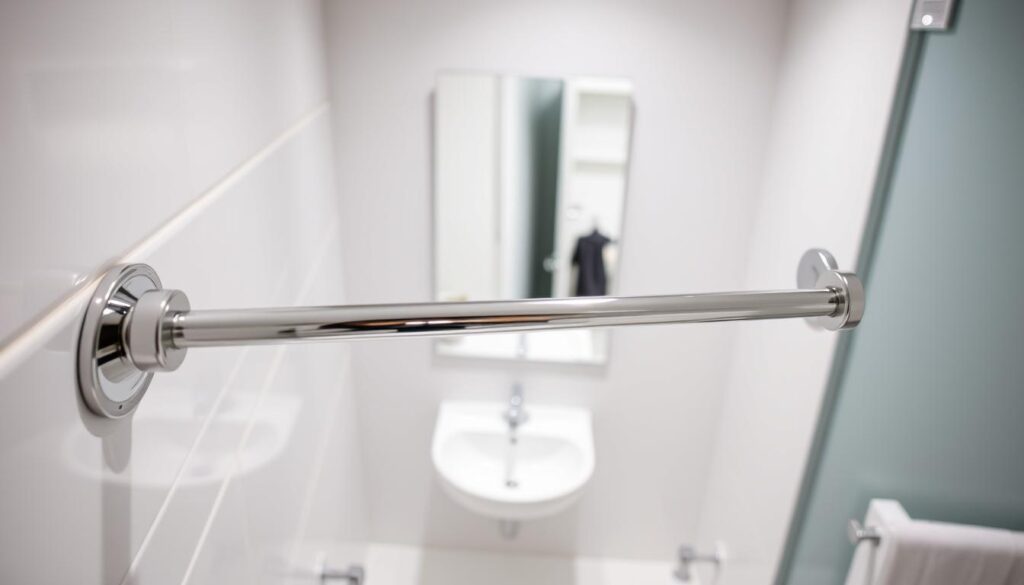
Proper preparation is key to a successful and lasting towel rack repair. By following these steps, you can ensure a secure and stable bar that will withstand daily use.
Installing Toggle Bolts for a Secure Fix
To ensure a secure fix for your bathroom towel rail, you’ll need to understand how to install toggle bolts effectively. Toggle bolts provide a reliable anchoring system, especially when dealing with drywall.
Measuring and Preparing the Toggle Bolts
Before installing toggle bolts, it’s essential to measure the thickness of your drywall to choose the correct length of toggle bolts. Toggle bolts come in two pieces: the bolt and the toggle, which is a spring-loaded, V-shaped nut that provides traction on the other side of the wall.
Inserting Toggle Bolts Through the Wall
To insert toggle bolts, first, pinch the toggles closed and carefully push them through the holes in the wall. Ensure that the toggles are oriented correctly; in most cases, they should be parallel to the floor to provide maximum holding strength.
Tightening the Attachment Plate Properly
Once the toggles are in place, tighten the attachment plate evenly to create a secure anchor point. It’s crucial to test the security of your installation before attaching the visible portion of your towel bar.
| Toggle Bolt Type | Drywall Thickness | Holding Strength |
|---|---|---|
| Spring-loaded Toggle | Up to 12.5mm | High |
| Heavy-duty Toggle | Up to 25mm | Very High |
By following these steps and using the correct toggle bolts, you can ensure a secure and long-lasting installation for your bathroom towel rail.
Alternative Methods for Different Wall Types
To effectively fix a loose towel rack, you need to consider the specific characteristics of your bathroom wall. Different wall types, such as drywall, concrete, or brick, require distinct approaches to ensure a secure mounting.
Solutions for Solid Walls
For solid walls like concrete or brick, you’ll need to use a drill bit designed for masonry to create holes for wall anchors. These anchors provide a secure hold for screws, ensuring your towel rack stays in place.
Using Adhesive Methods
Adhesive mounting is a viable alternative for certain wall types, especially when drilling is not preferred. To use adhesive methods effectively, clean the wall surface thoroughly and apply the adhesive according to the manufacturer’s instructions.
Repairing Damaged Wall Areas
If the wall is damaged around the towel rack area, you’ll need to repair it before remounting. Use joint compound or plaster to fill holes or cracks, and let it dry completely before proceeding.
| Wall Type | Recommended Fixing Method | Additional Notes |
|---|---|---|
| Drywall | Toggle bolts or adhesive | Be cautious not to overtighten |
| Concrete/Brick | Masonry drill and wall anchors | Use a slow drill speed to avoid damage |
| Plasterboard | Plasterboard anchors | Choose anchors suitable for the weight |
By understanding your wall type and choosing the appropriate fixing method, you can ensure your towel rack remains securely in place.
Conclusion: Maintaining Your Newly Secured Towel Rail
A securely fixed towel rail is just the beginning; proper maintenance is key to its longevity. To ensure your bathroom fixtures remain in good condition, it’s crucial to adopt a few simple practices.
Firstly, be mindful of the weight distribution on your towel rack. Avoid overloading it, as this can cause the screws to loosen over time. Regularly inspect the towel bar and tighten any loose screws to prevent minor issues from becoming major problems.
Additionally, proper care for different towel rack materials is essential to maintain both function and appearance in your bathroom. By combining proper installation with mindful use, you can significantly extend the lifespan of your bathroom fixtures.
By following these tips, you’ll be able to enjoy a stable and functional towel rail for years to come, creating a more comfortable and convenient home.
